Frame Rated at 5: Our 5 Favourites (2015-20)
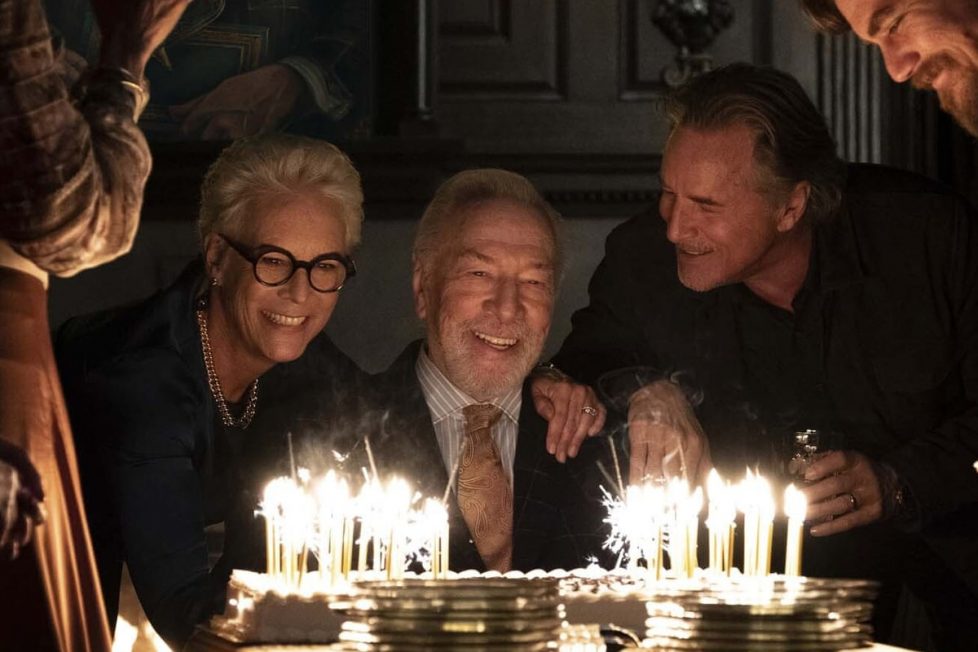
Exactly 5 years ago today, Frame Rated launched onto the internet with reviews of Avengers: Age of Ultron and two new Netflix series — Daredevil and Bloodline. Has it really been that long? We’ve since had two more Avengers films, Daredevil made three seasons before cancellation, and who remembers when Bloodline felt like an exciting new show? 2015 seems a long time ago, in some ways, but just like yesterday in others.
In delightful synergy, we also recently published our 1,500th article. That means we’ve been writing an average of 300 articles each year, which is almost one a day. Other sites may do a lot more, but we’ve always valued quality over quantity. And we’ve kept away from ‘churnalism’ and articles based on news and gossip, to focus instead on reviews of cinema releases, home video discs, and television shows.
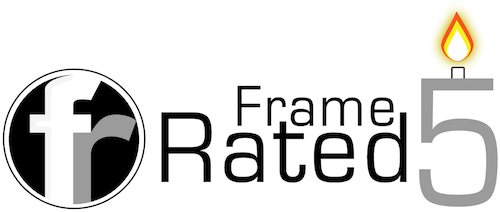
5 years seems like an opportune moment to think ahead to the next half-decade. There are areas of the site I’d love to improve and new challenges I’d enjoy embracing, but big changes require a long investment of time that demands (whisper it) financial support.
If you’ve enjoyed reading our FREE content all this time (with no pesky adverts or pop-ups ruining your experience!), please consider supporting us via Patreon.
For $5 (£1.65) per month, you get early access to reviews, insider knowledge about our plans, and other occasional perks. We could do a great deal without financial restrictions holding us back. Buying discs and cinema tickets, the travel expenses to attend press events and film festivals, the admin and hosting costs of running this website itself, etc.. it all takes a lot of cash! A financial cushion provided by crowd-funding would revolutionise our output.
Enough micro-payments would drive major changes!
Of course, we’ll keep plugging away regardless, to at least maintain the site in its current form and output levels. So if you’re in no position to help us monetarily (especially during the COVID-19 pandemic), please at least follow us on Twitter, Facebook, and Instagram… then keep an eye on our Tumblr and for syndicated content on Medium (which includes exclusive features)… oh, and why not sign up to our Newsletter for Editor’s Picks and Red Carpet competition privileges (where your entry gets included twice in a random selection of winners). You’re only a few clicks away!
Anyway, enough from me. To celebrate Frame Rated’s 5th anniversary, some of our writers have chosen their 5 favourite films of the past half-decade and written a little something about each. We hope you enjoy it and would love to read your Top 5’s in the comments below.
— Dan Owen
Editor-in-Chief

Inherent Vice. “Will your restless heart come back to mine on a journey through the past?” sang Neil Young on the soundtrack to Paul Thomas Anderson’s forlorn 1960s-set stoner mystery. His most divisive film, Inherent Vice (2014*), also saw the director at his most broadly comic… yet amidst the drug-selling dentists, surf-rock saxophonists, and detectives with frozen banana fixations, there lay a beating heart aching for the Pacific Ocean. On first viewing, the dope-smoke blended plot is daunting and incoherent, but repeat viewings open it up, suggesting it’s not a story to be followed but a film to live in. With one of Joaquin Phoenix’s best and most enjoyable performances, gorgeous sun-kissed photography, and an encroaching noirish dread lingering under its surface, Inherent Vice makes for the perfect bummed-out comedy. It’s crushing and hysterical in equal measure, making it my favourite film of the past five years … and maybe of all time.
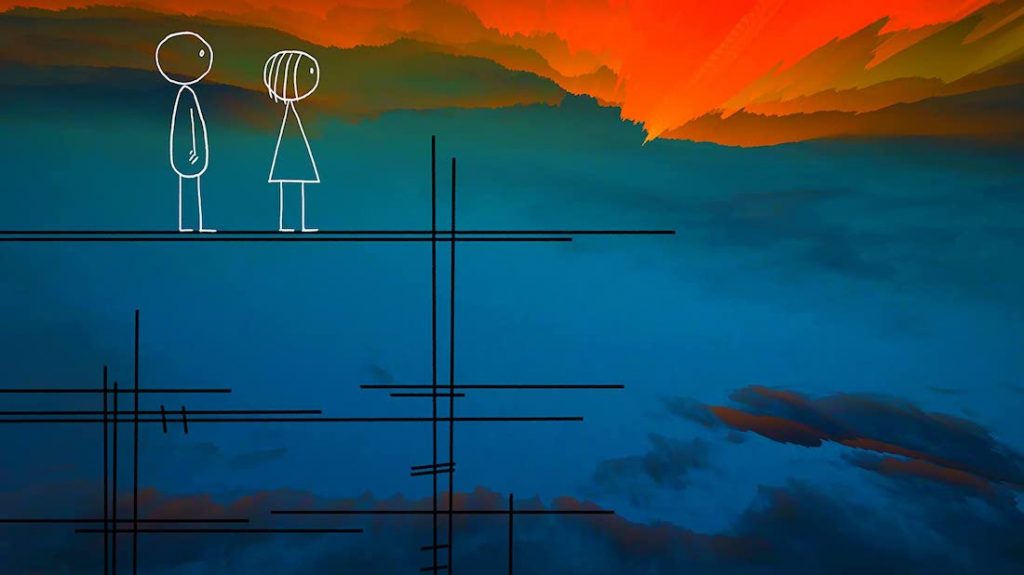
World of Tomorrow. Don Hertzfeldt makes art that might ruin your day. In league with existentialist filmmakers like Charlie Kaufman and Terrence Malick, Hertzfeldt’s work feels initially small and specific, before quietly breaking your heart and making you wonder exactly where your place is in this world. Perhaps his greatest achievement with World of Tomorrow (2015) is that he does it all in under 20-minutes. Animated in Hertzfeldt’s signature doodled style, this sci-fi tale sees a young girl visited by a future version of herself… who provides a tour of her near and distant future. Hertzfeldt’s most startling talent is that he achieves so much with so little, saying more in just a few frames of home-made animation than many feature-length films do over three hours. It’s not until you’ve finished World of Tomorrow that it dawns on you that you’ve seen something truly special. If only all sci-fi were this soulful.
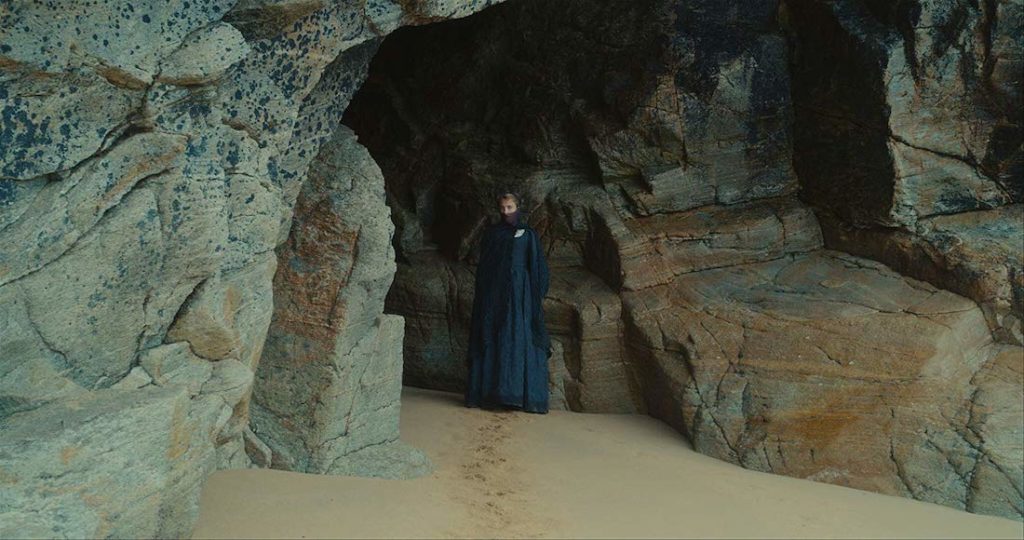
Portrait of a Lady on Fire. Achingly romantic and tender, Celina Schiamma’s Portrait of a Lady on Fire (2019) is downright heavenly. The story of an artist sent to covertly paint a young woman due to be married to a nobleman, Sciamma’s period piece works in themes of art and representation, memory and subjectivity, and the truths we find through art. No cinematic relationship over the past five years has felt as organic or romantic as this one portrayed by Noémie Merlant and Adele Haenel. Schiamma’s movie may be carefully constructed and remarkably sophisticated, but it’s no austere period-piece… often funny and playful, it’s impossible not to get swept up in its hypnotic embrace.
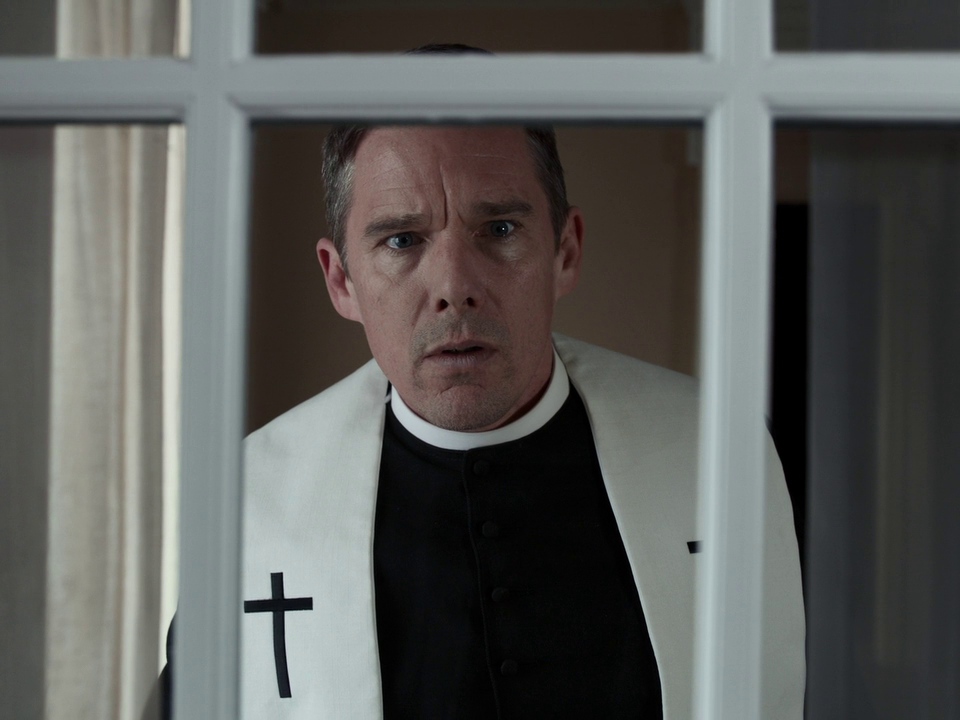
First Reformed. After a lifetime of dragging them through hell on earth, writer-director Paul Schrader finally brings his ‘God’s lonely man’ archetype to the end of the world — and never has a film felt so believably apocalyptic. Ethan Hawke’s tortured pastor Ernst Toller is his finest and most challenging role yet; a man not simply questioning his faith in response to a dying world, but falling headlong into despair at the senselessness of nature and mankind. Topical in its anxieties about global warming, but timeless in its depiction of the numbing effects of a crisis, First Reformed (2017) is combustible filmmaking that plays less like a stately drama and more like psychological horror. There are haunting images that are unforgettable, but a strange catharsis found in the film’s choice to stare headlong into darkness. Sometimes art about the end of the world can feel oddly cleansing.
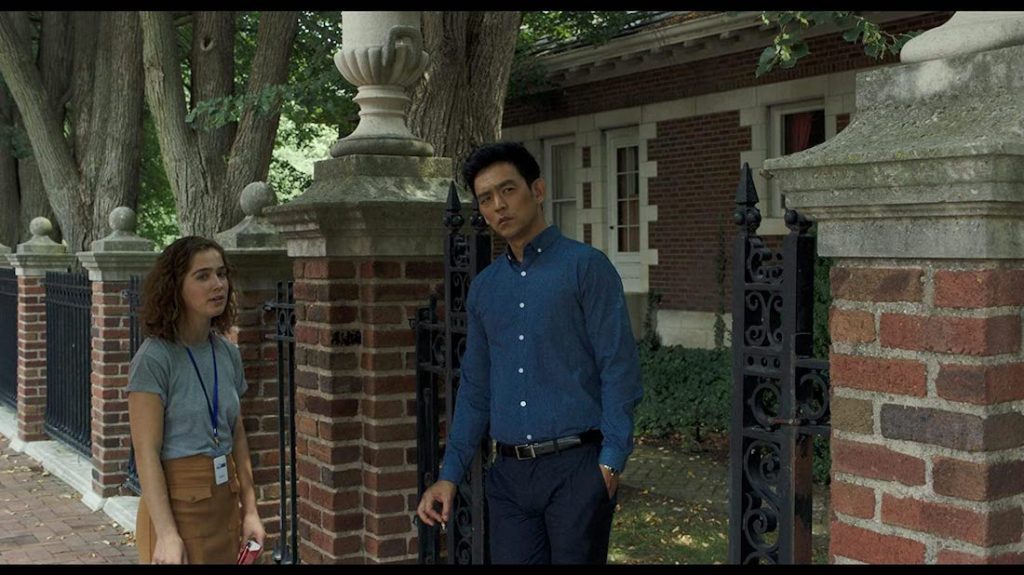
Columbus. It sounds odd to say a film about architecture is one of the most emotionally involving of the past half-decade, but it’s true of Columbus (2017), a film that’s less essayistic than it is humanistic. Exploring buildings as externalisations of the people who inhabit them, Kogonada’s film is beautifully succinct and visually modern in the manner of an Adrian Tomine graphic novel. Even when the buildings don’t thematically connect with each other in the town of Columbus, Indiana, two people living there — equally as unlikely — do connect. John Cho and Haley Lu Richardson as disparate strangers at the core of the film do sublime work, reminding us that honest human interactions can be a rare saving grace in the world. Recalling Richard Linklater’s Before trilogy, Kogonada ponders the missed connections and unplanned links we have to the people and world around us. It’s a meditative but essential film that finds heart and soul amongst bricks and mortar.

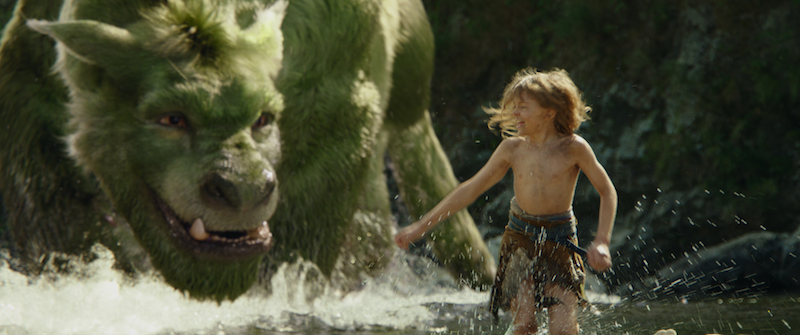
Pete’s Dragon. It seems we’ve reached a time when those in a position to make movies are the generation who grew up with ‘old school’ Disney. We’ve had some great Disney live-action remakes like The Jungle Book and Beauty and the Beast — but, for me, Pete’s Dragon (2016) is the stand-out. The original is one of the first movies I remember going to see in the cinema. I think I was dropped off at the children’s film club as my parents went shopping. The story of a little boy befriending an invisible dragon captivated me. I loved that fantasy aspect, but the songs, why?! David Lowery’s remake was everything I wanted the original to be… and more. With modern VFX, the green dragon was realised convincingly and beautifully…. the ending was improved… and there were no songs this time! I can’t fault it.
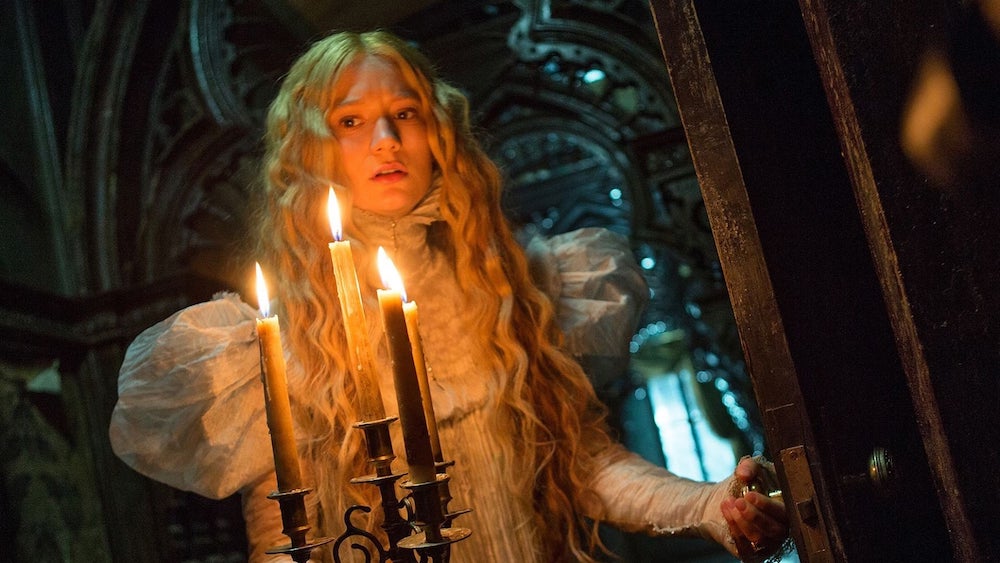
Crimson Peak. Guillermo del Toro already proved he was comfortable working in the haunted house subgenre with The Devil’s Backbone (2001), but Crimson Peak (2015) proved he could resurrect tired tropes and make them all the more gorgeous and ghostly. I haven’t enjoyed a new Gothic horror as much as this since Francis Ford Coppola’s Dracula, to which it owes a stylistic debt. I loved nearly everything about it; the story, the production design, the costumes, the performances, and the generous nods to its genre antecedents.
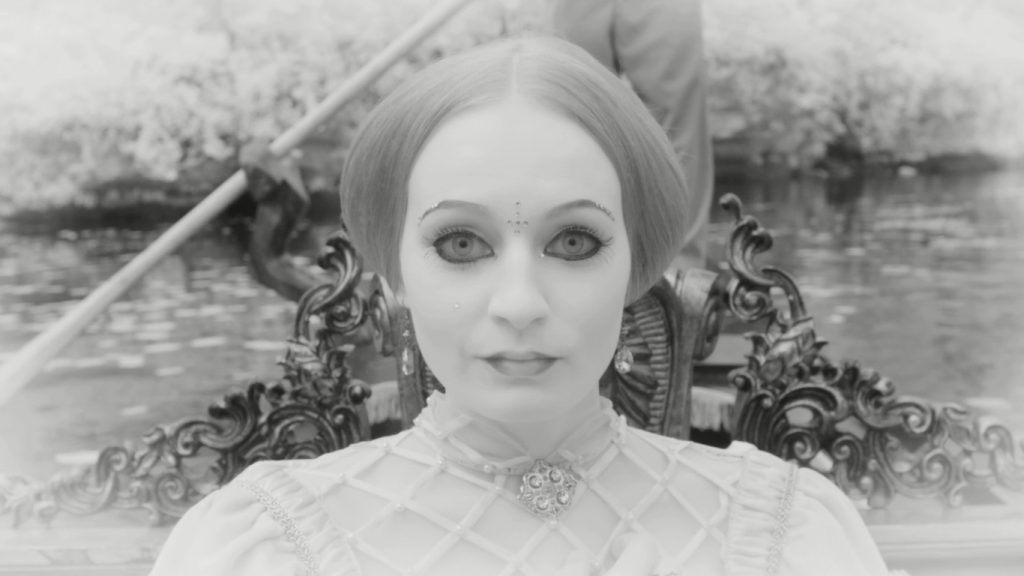
November. I love horror films and I’m a scholar of folklore. It takes a lot for a folk horror film to satisfy, let alone surprise, me. Rainer Sarnet’s November (2017) is a completely captivating and beautifully beguiling film that manages to seamlessly stitch together supernatural suspense, folk-horror, Gothic romance, coming-of-age drama, love story, comedy, and pathos. Haven’t seen anything so different in a long while and it certainly satisfied and surprised me.
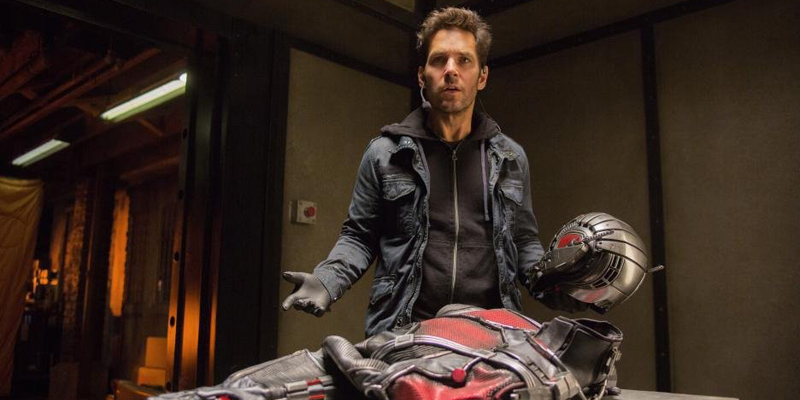
Ant-Man. I’m not the biggest fan of the superhero genre which has been saturating cinema screens… but they’re great for Media Studies classes and seem to be the lowest common denominator for family gatherings. So I’ve seen my fair share of them! Perhaps I’m getting old, but it seems that most sacrifice any narrative elegance for a VFX sideshow. This isn’t the case with Black Panther, Aquaman, and Ant-Man (2015)—the latter one I’ve returned to for several viewings and thoroughly enjoyed each time. Maybe it’s so much better and less predictable because Marvel worked harder to do justice to one of their lesser-known characters. It’s shot through with clever humour that respects the context, and I enjoyed the almost Lovecraftian play on quantum physics and layers of reality. Compared with the competition, Ant-Man really upped the ante!
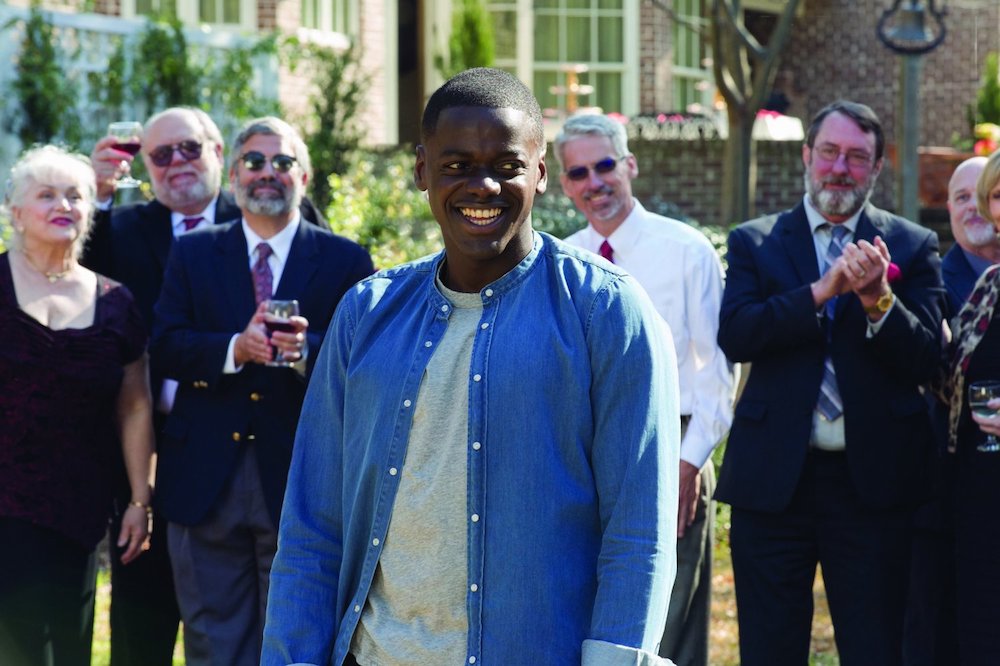
Get Out. A refreshing addition to the horror genre, this has moments of genuine terror and dread, but without being super-depressing. Writer-director Jordan Peele doesn’t let the subtexts of racial identity and cultural appropriation get in the way of a great story full of suspense and surprises. It manages to tackle serious topics and slips in some comedy without trivialising any of its social commentaries. It respects familiar horror tropes while subverting them, all while gleefully messing with every stereotype.

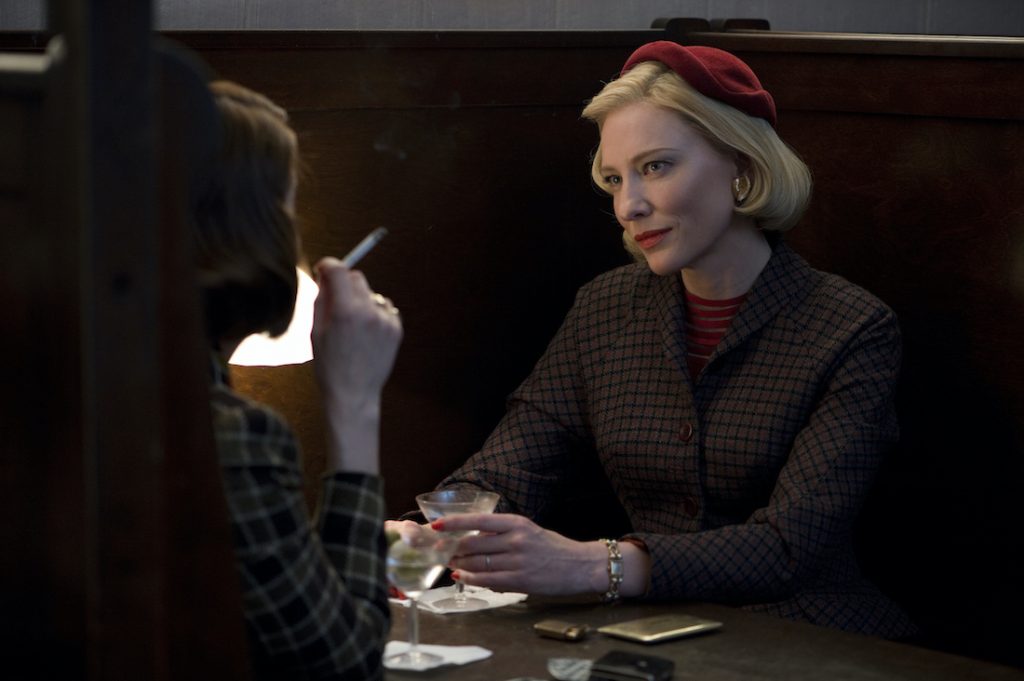
Carol. In a period drama about the forbidden romance between two women, I wasn’t the target audience for Carol (2015). Yet in a half-empty cinema, I fell deeply into its world of lust and love created by a moment’s glance between strangers. The micro-expressions between Rooney Mara and Cate Blanchett’s characters (the suggestion of two entirely different worlds on the cusp of merging) are utterly absorbing. Todd Hayne’s impeccable direction, alongside Carter Burwell’s magical score, help craft a tight mood-piece on the yearning for recognition from someone you think is the missing piece in your life.
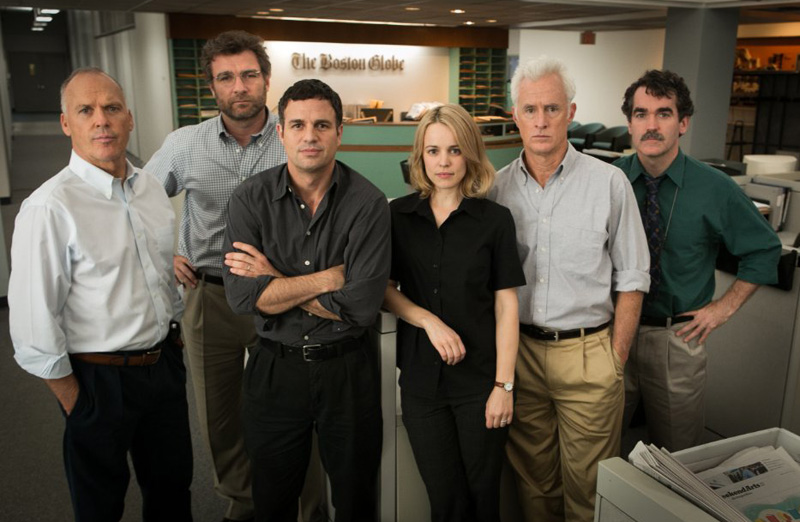
Spotlight. When this film about the Boston Globe’s investigative journalism into Catholic paedophiles premiered in Venice, audiences erupted with laughter at the ending, which is strange given just how unmelodramatic Tom McCarthy constructs this measured and largely accurate history lesson. Laughing can be a release for discomfort and that’s precisely why Spotlight (2015) had such an effect on me. It’s engrossing without resorting to any cheap emotional tricks. One sees the true story of people objectively and honestly questioning whether their own tight-knit community could be allowing such atrocities.
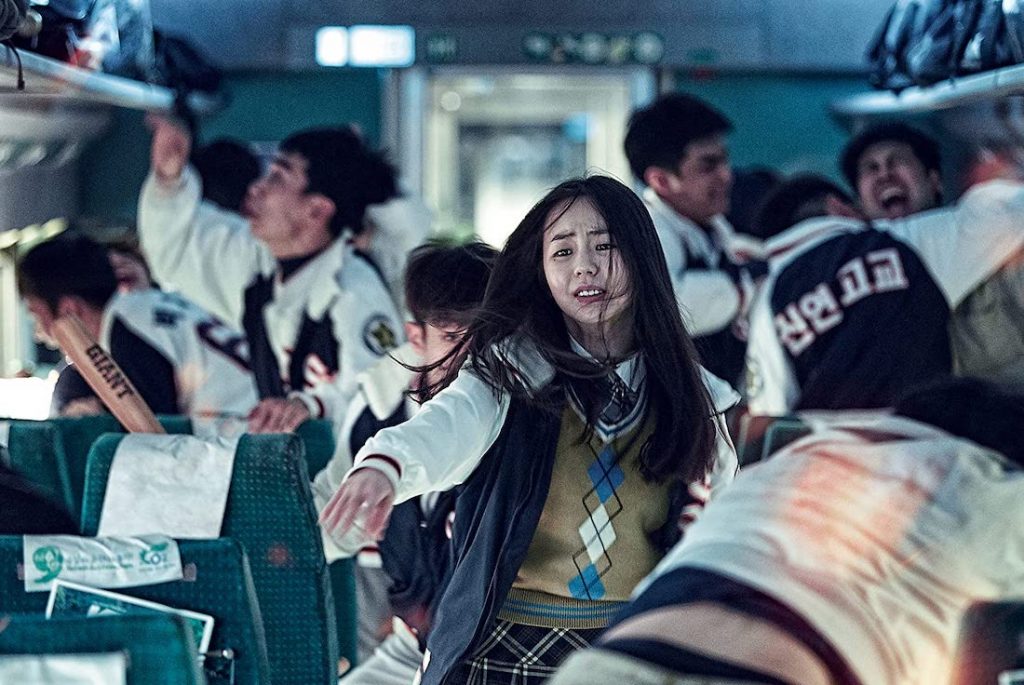
Train to Busan. ‘Zombies-on-a-train’ is a guarantee Yeon Sang-ho explores from start to finish in this non-stop adrenaline ride. Perfectly balancing large-scale horror and a social chamber piece, Train to Busan (2016) develops a dire fight for survival as interpersonal stress infects the last remaining carriages. A comparison to George A. Romero’s classic Night of the Living Dead is due as the similarities are so entertaining; how Romero’s survivor’s ventured outside is heightened to new levels of terror as missing a departure means certain death with each train stop.
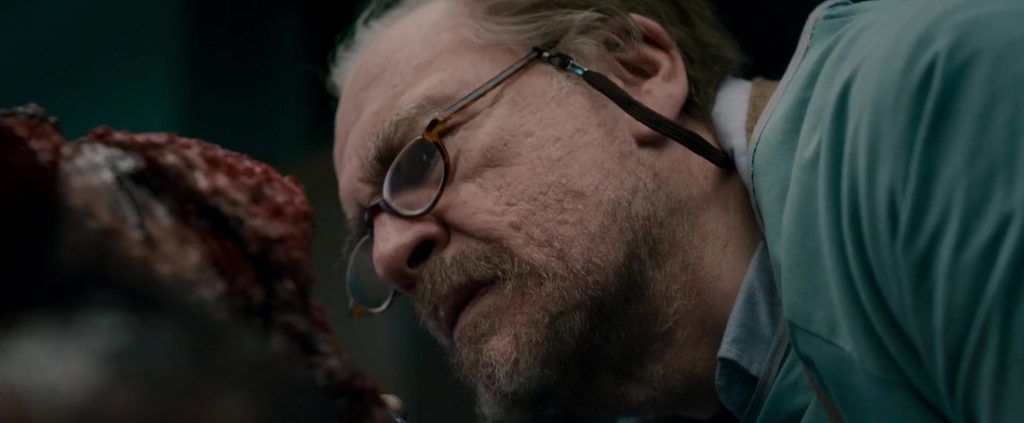
The Autopsy of Jane Doe. Amongst the best of the last five years, an independent horror from the director of Trollhunters that made $6M in the box office seems to stick out, and it should because it’s criminally underrated. Horror author Stephen King praised The Autopsy of Jane Doe (2016), and despite having no involvement it feels like something he’d write, which makes it all the more impressive as an original idea. A father and son perform a routine autopsy on an unidentified female corpse (a ‘Jane Doe’) and from there the mystery thickens. If King can make cars, dogs, and hotels brim with evil energy then this proves even dead bodies can carry powerful auras of horror.

Spider-Man: Into the Spider-verse. With imagination and a riot of visual style, this proves to every bloated superhero movie that you can, in fact, introduce a fantastic new character in as little as a single scene. Like the music that Miles Morales listens to, Spider-Man: Into the Spider-verse (2018) is a frenetic collage of sight and sound. Whereas I found myself disappointed with Peter Parker’s lack of development in Spider-Man: Far From Home, here we’re introduced to multiple Spideys—each with their own satisfying emotional arcs that bounce and blend together through fast dialogue and faster action.

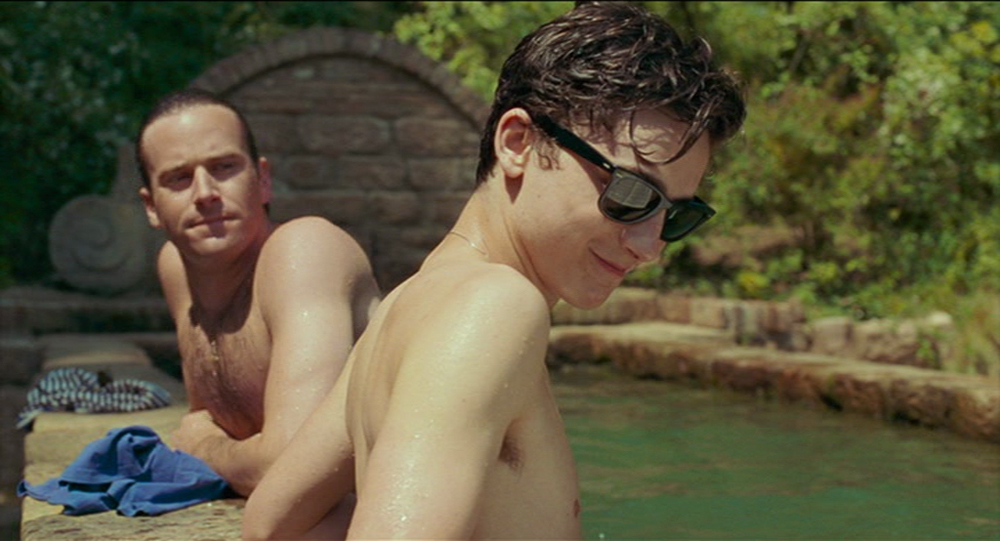
Call Me By Your Name. Italian director Luca Guadagnino’s film looks and feels exactly like your first love. It’s hard to think of a recent movie that deals with the early stages of romance with such sensitivity and sweetness. Call Me By Your Name (2017) unfolds as languidly as the lazy days it depicts. Based on André Aciman’s 2007 novel, it tells the story of a short-lived yet intense summer fling between teenager Elio (Timothée Chalamet) and handsome graduate (Armie Hammer). The pair spend the summer of 1983 discussing philosophy and literature, playing music, sitting by pools, riding bicycles down classic Italian cobblestone roads, and getting drunk under the Mediterranean sun. The mood’s so tangible one can almost taste the sweat and smell the food. It all builds up to one of the most heart-breaking final shots of recent years, making a star out of Chalamet in the process.
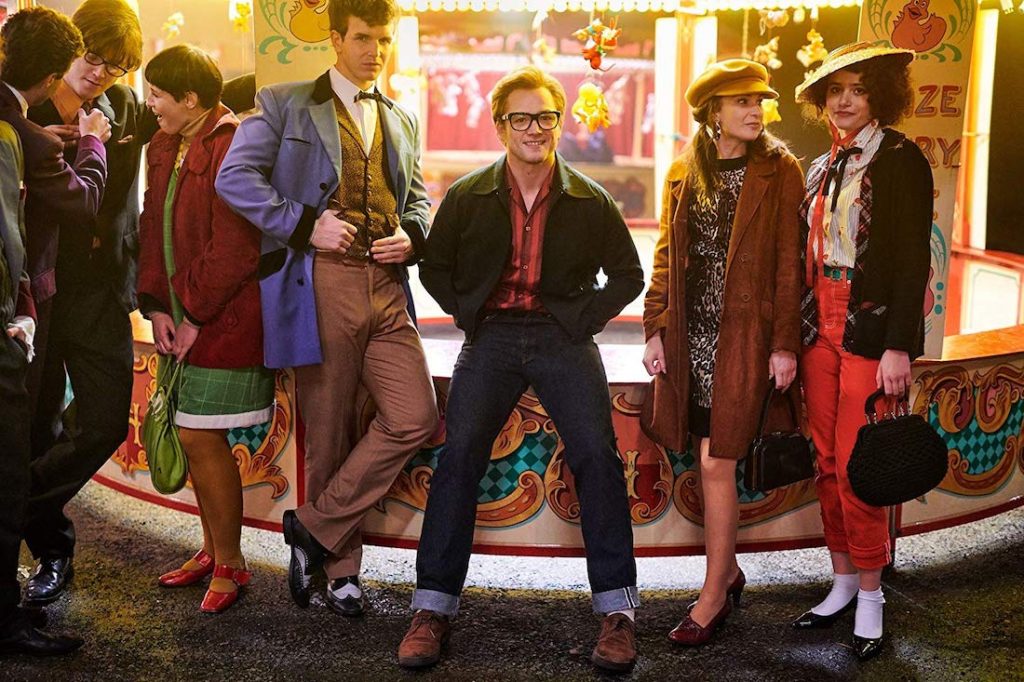
Rocketman. After the disappointing straight-washing of Bohemian Rhapsody, I approached Elton John biopic Rocketman (2019) with caution. But it was funnier, more heartfelt, and upfront about the flaws of its flamboyant subject. Hidden under Julian Day’s costume and Giles Martin soundtrack was a touching story about friendship, acceptance, and overcoming demons. Rocketman ditched the linear musical biopic formula in favour of a razzle-dazzle musical filled with dance numbers and lush fantasy sequences. It honours Elton’s life and career without canonising him; refusing to shy away from anything and portraying his struggles with sexuality and addiction with rare sensitively. Taron Egerton’s performance carries it all, whilst Jamie Bell brings heart to the spectacle as songwriter Bernie Taupin. Finally, theatre kids struggling to accept their sexuality could see themselves depicting without the ‘bury your gays’ trope.
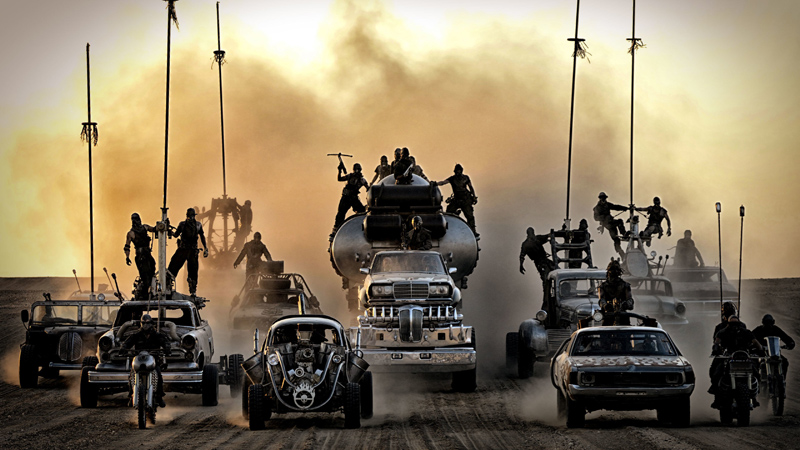
Mad Max: Fury Road. If the last five years can be characterised by a subgenre, it would be the reboot. Most were misfires, but Mad Max: Fury Road bucked the trend. 30 years after Mad Max Beyond Thunderdome, George Miller brought back the grit of his 1980s trilogy with added stunts, cars, and feminism. The adrenaline-fueled death race covered sex slavery, feminism, and environmental issues. With a riff on the Western, Fury Road returned to the post-apocalyptic wasteland on the hunt to reclaim the humanity of war brides. No film has since executed such a revolutionary mix of zany VFX and practical stunts.
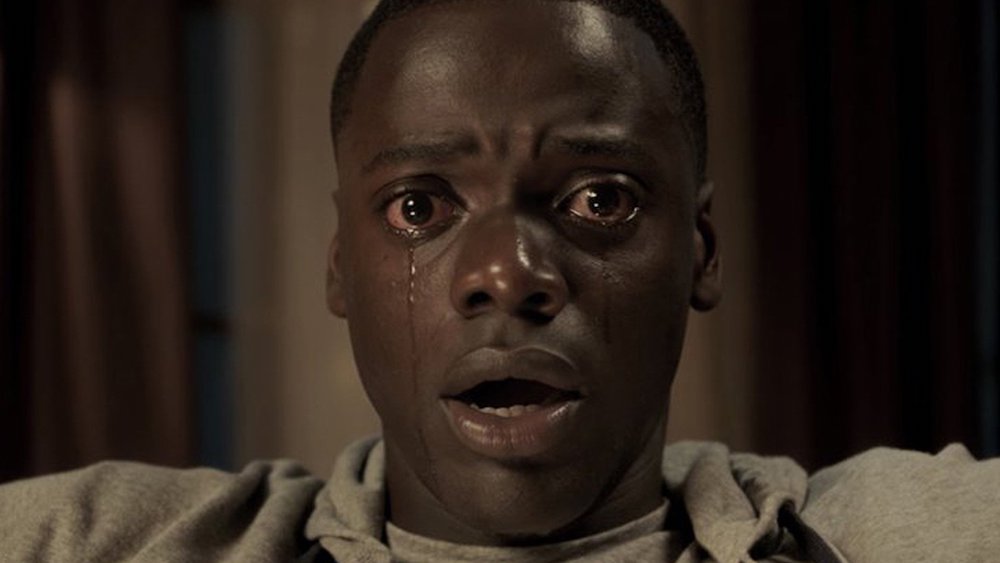
Get Out. Former sketch comedian Jordan Peele’s debut film became a cultural phenomenon in 2017, winning an Academy Award for Best Original Script. His dark twist on Guess Who’s Coming to Dinner? hit the perfect note for the opening months of the Trump administration. Daniel Kaluuya (in a star-making turn) plays Chris, a photographer who meets the family of his girlfriend. Her parents (Catherine Kenner, Bradley Whitford) seem nice enough, considering their privileged white liberal attitude, but evil lurks beneath these Obama voters. Get Out injected the horror genre with a fresh nuance and a social conscious. The darkly comic thriller echoed the racial paranoia that swept America, making it a box office and critical success… as well as rebranding Peele as one of Hollywood’s most exciting talents.
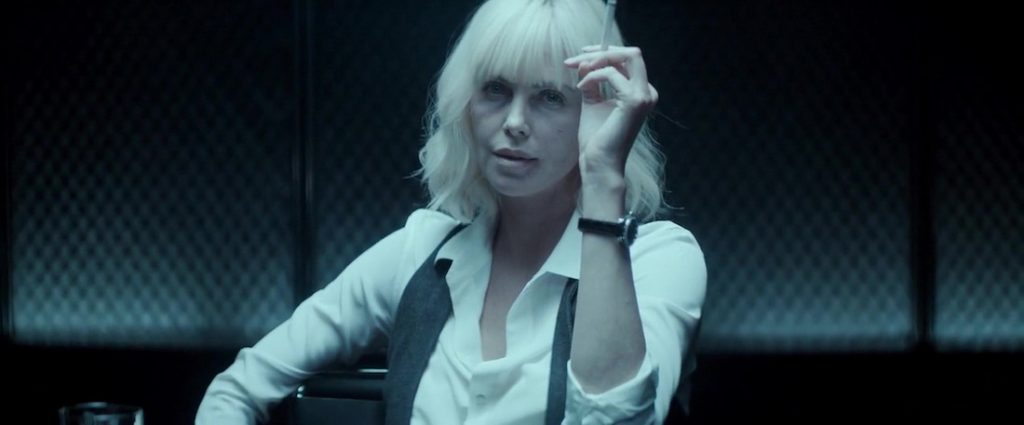
Atomic Blonde. Stuntman-turned-filmmaker David Leitch followed his work on John Wick with another stylish action thriller. Charlize Theron is a Cold War spy on a Berlin mission to retrieve a list of double agents. Atomic Blonde (2017) is unapologetic with its neon colours and 1980s New Wave score. Whilst the plot is convoluted, Theron has the grace of a ballet dancer with brutality to make John Wick wince. This felt like a turning point for female-led action films with its drawn-out fight scenes often involving household objects. Atomic Blonde is a chaotic explosion of ‘80s gloss, featuring highly stylised death and sex in equal measures. Berlin is portrayed through a funhouse mirror, making it feel more like an existential apocalypse than a tangible place in history. Atomic Blonde is a gorgeous spy thriller with more up its sleeves than plot twists and fights.

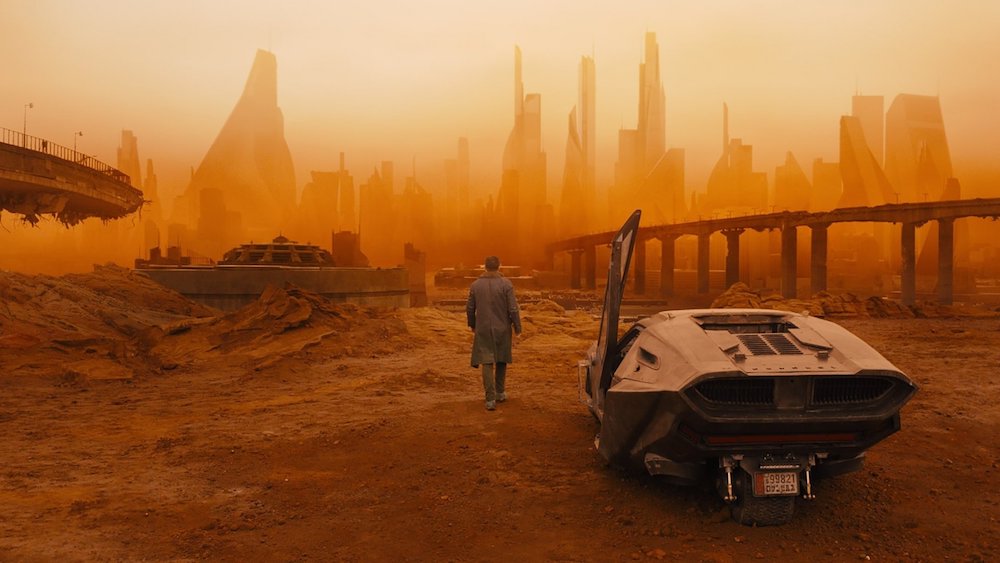
Blade Runner 2049. Cinema has always been a way to escape the humdrum for me. I love spending time in visions of possible futures that seem unerringly tangible, so Denis Villeneuve’s sequel to Blade Runner was like catnip. It’s also something of a miracle, to continue the legacy of Ridley Scott’s masterpiece in a way that doesn’t underwhelm and meets sky-high expectations. It’s arguably a richer and more interesting film, too, albeit one that could never be as visually groundbreaking. It tackles similar subject-matter about artificial life, but in a way that doesn’t feel like a pointless retread. Even Harrison Ford returned to give a good performance that didn’t feel like he had one eye on the paycheque.
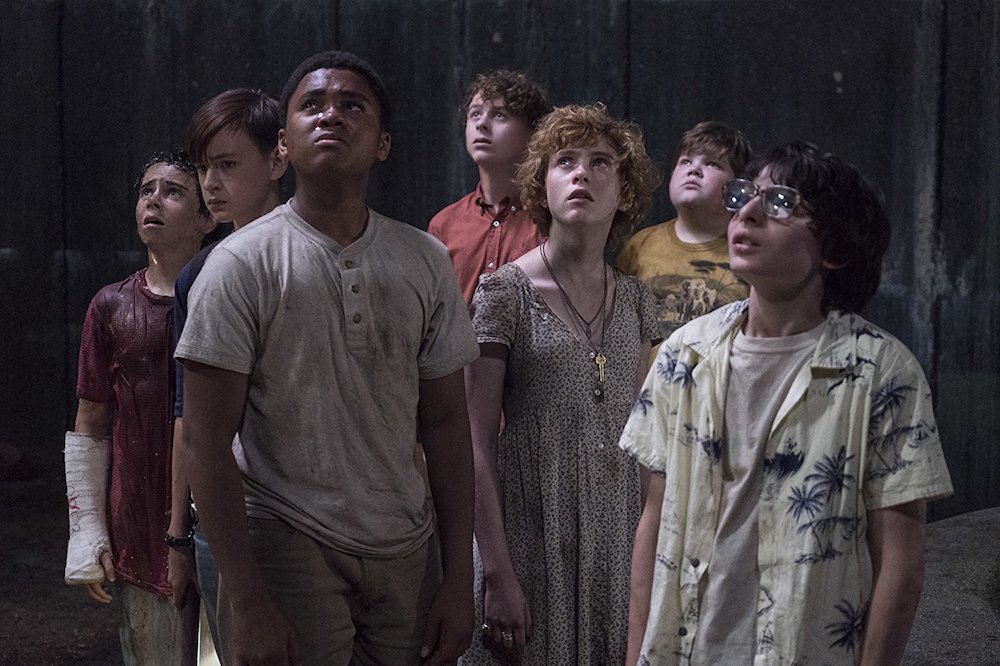
It. We’re drowning in throwbacks to the 1980s, but having grown up in that decade there was much about Andy Muschietti’s adaptation of Stephen King’s It (2017) that spoke to me. I love coming-of-age stories about young kids having to confront adult problems and sinister enemies, and It has loomed large over this sub-genre for decades. This is a smart update that got so much right about how best to handle the enormous book. The performances are excellent from every one of the younger stars, Bill Skarsgård as Pennywise the clown was suitably chilling, but it was also fun and enjoyable rather than entirely chilling and frightening. The perfect popcorn horror for the masses. (Shame the generic sequel focusing on the adults didn’t float at well as this first chapter.)
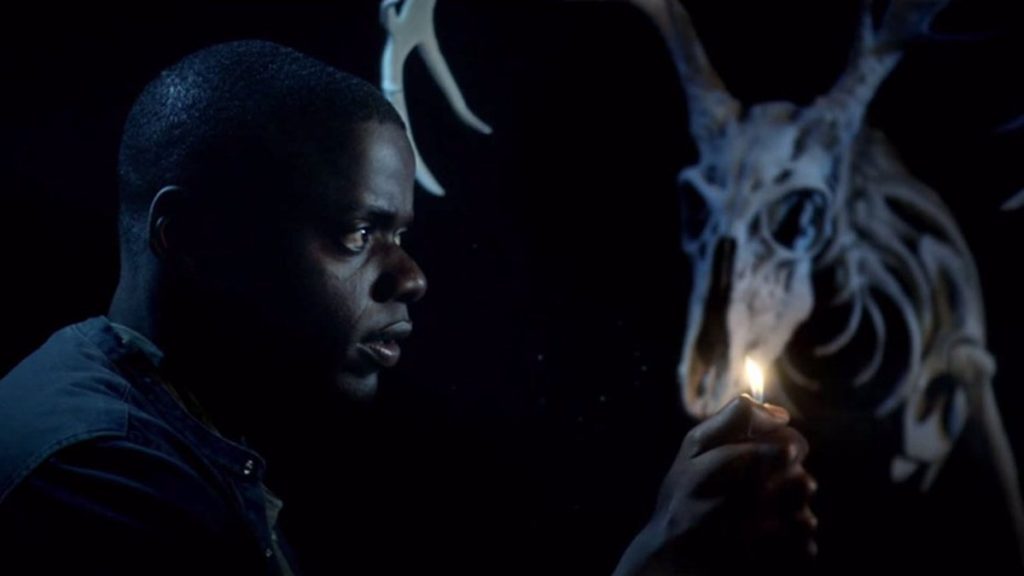
Get Out. The most intelligent horror film I’ve seen in ages, with an angle that seemed fresh and mostly untapped. As a white middle-aged Englishman, it’s difficult to understand the prejudice and problems faced by black people every day, particularly in America, a country with a troubled history on the matter. Get Out (2017) is a masterful debut from Jordan Peele, whose comic sensibilities are put to great use with a tense story about the likeable boyfriend of a white girl whose parents have a… let’s say unusual attitude towards black people. The way it drip-feeds information about just what on earth is going on was sublime, and the strange direction things ultimately take never overstepped its bounds. And it made swirling a teaspoon around a cup the most chilling sound in years.
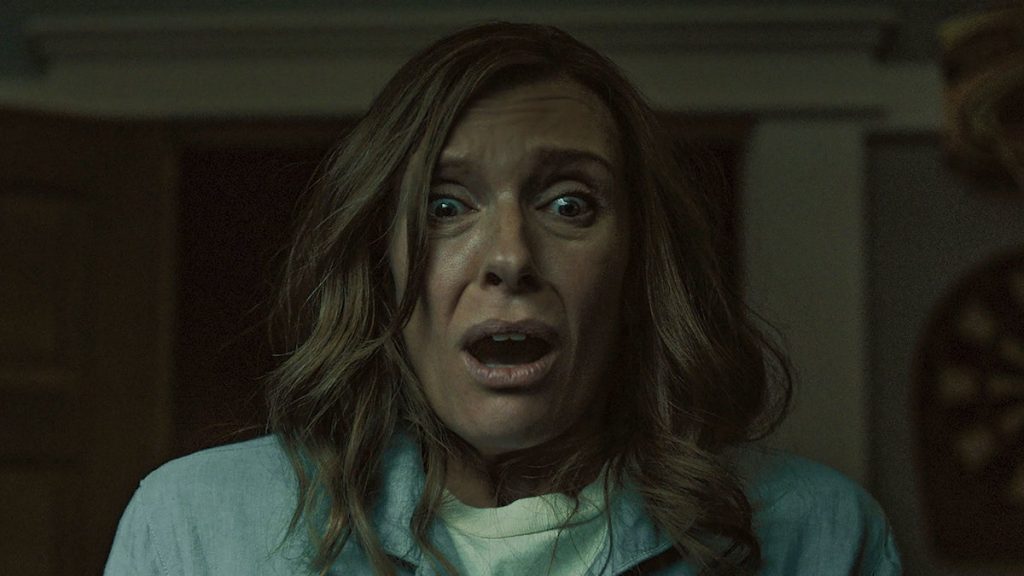
Hereditary. Ari Aster’s debut is a wonderful family drama with an emphasis on the damaged characters, that takes an unexpected swerve into darker territory that keeps you guessing. The way Hereditary (2018) develops as a story is what really stuck with me, as we’re accustomed to certain tropes and ideas in films that seem similar on the surface.. but this just seems more insidious and terrifying at times. And the ending is sublime.
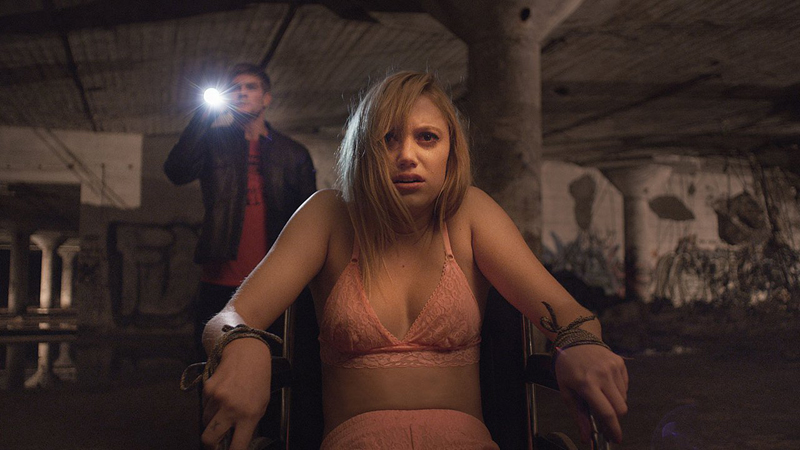
It Follows. Yes, the horror genre has really delivered for me considering my other choices! It Follows (2014*) was another debut (my third on this list) and what binds them together is their fresh voices. David Robert Mitchell’s ’80s-tinged supernatural slasher is deliciously creepy, blessed with a magnificent concept of a sexually-transmitted curse that means a shape-changing boogieman (that only the infected can see) will relentlessly stalk and kill you… unless you pass on the curse by having sex (flipping the horror convention that chastity is the best way to stay safe). The film is beautifully presented and rich in atmosphere. It does end a little too abruptly for my taste, have to admit, but this is otherwise a perfect little-known horror to impress like-minded friends with.


Blade Runner 2049. If the vision of the future in Ridley Scott’s 1982 original was lavish and flamboyant (appropriate for the era of shoulder pads and big hair), Denis Villeneuve’s Blade Runner 2049 (2017) is more constrained: a dystopia for the age of austerity. This version is every bit as persuasive as its predecessor, and indeed the mise en scène perhaps distracts us less than it did in Scott’s movie. Though stylised in its way ( obsessive jolts of Prokofiev on the soundtrack, big Kubrickian fields of colour ), Villeneuve’s Blade Runner is more human. Or pseudo-human, perhaps: in the most moving sequences, we find ourselves feeling empathy for holograms. It’s a rare filmmaker who can achieve that.
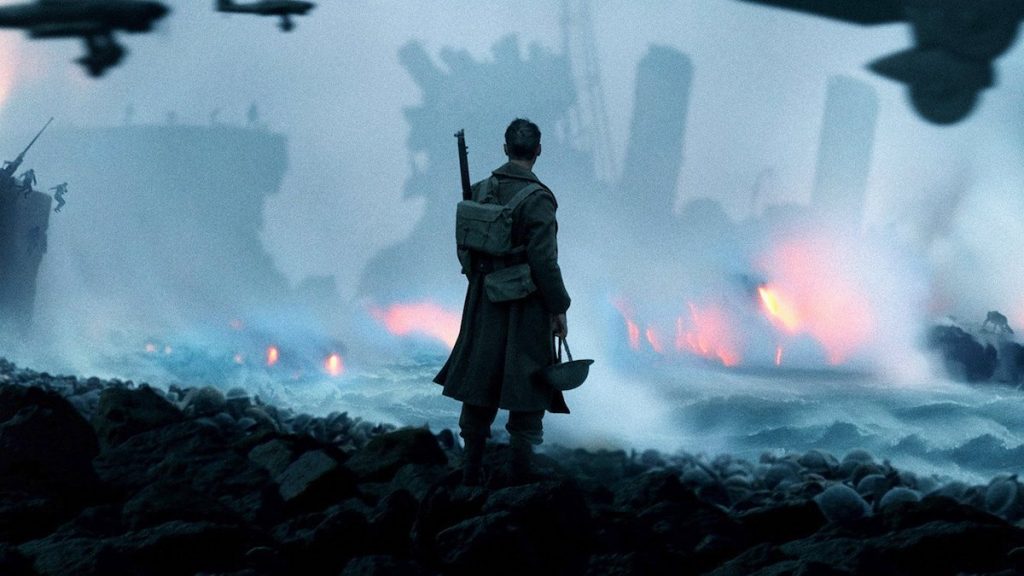
Dunkirk. An unusually realistic war film in being about logistics as much as combat, Dunkirk (2017) makes my top five for its impact on the audience. It’s a movie of strange contradictions which give it an odd and haunting quality — full of familiar faces but without a real lead, epic and unrelenting yet comparatively short — and of course the event it portrays (with broad accuracy) is a kind of contradiction too: both a defeat and a symbol of victory. Dunkirk is perfectly crafted in almost every respect, but the standout is the score from the often overrated Hans Zimmer. The moment where a tortured, elongated version of Elgar’s Nimrod breaks through the growls and drones of Zimmer’s score is breathtaking.
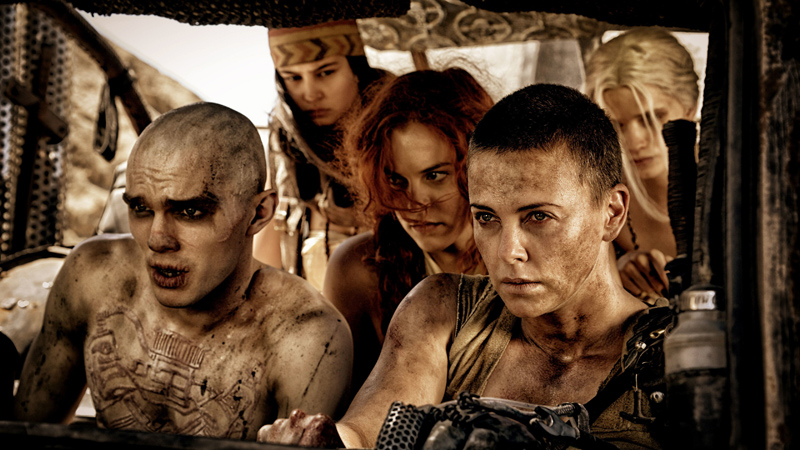
Mad Max: Fury Road. This is as close as a big-budget release can get to being pure cinema. The plot and the actors count for little: all that matters is the set-pieces, the aesthetic, and an outstanding score by Junkie XL. (I wrote at the time that it “becomes an integral part of the action in a way that film music rarely does. You know the characters can’t really hear it, but you also wouldn’t be surprised if they could, at some unconscious level.”) Mad Max: Fury Road (2015) is two-hours of overwhelming immersion in a brilliantly imagined world where the savagery never stops, and when you come out of it you’re not picking away at the finer points of franchise consistency or character arc: you’re thinking “wow”.
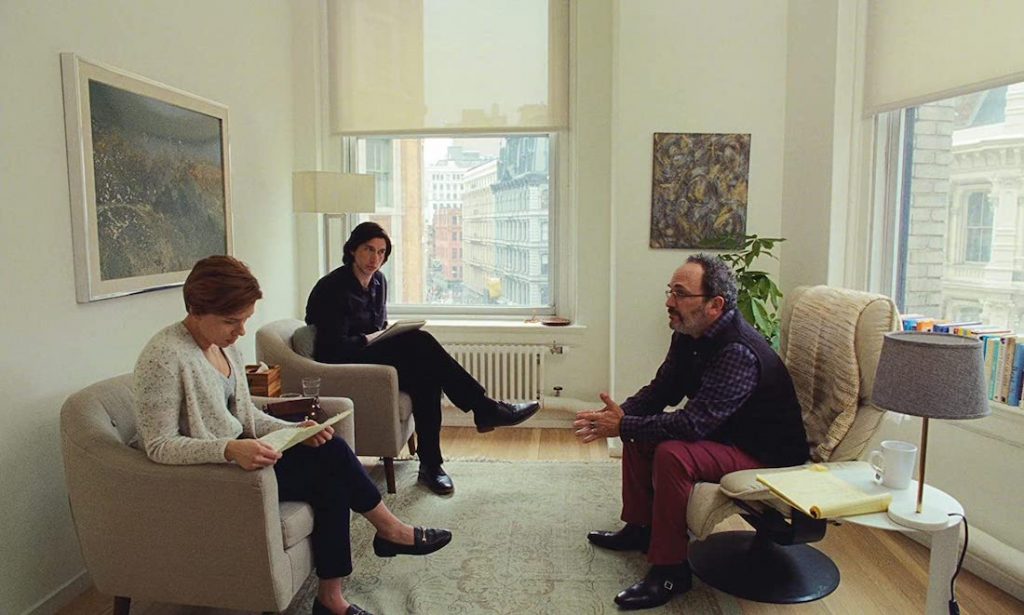
Marriage Story. Unlike all the others on my list, Noah Baumbach’s Marriage Story (2019) is unassuming. There are no grand visions here, no pyrotechnics, few emotional explosions despite the fact it’s about emotion. The genius of Marriage Story is the way it explores the complex, often unfathomable functioning of human relationships by documenting the end of one, rather than the much more conventional beginning. As a result, the material is much richer: the characters are genuinely torn apart by competing motives and feelings, in the way a newly-smitten couple wouldn’t be. Adam Driver and Scarlett Johannson carry the film, with fine support from Laura Dern and others, while Baumbach’s direction is mostly about letting the superb script and performers do their jobs.
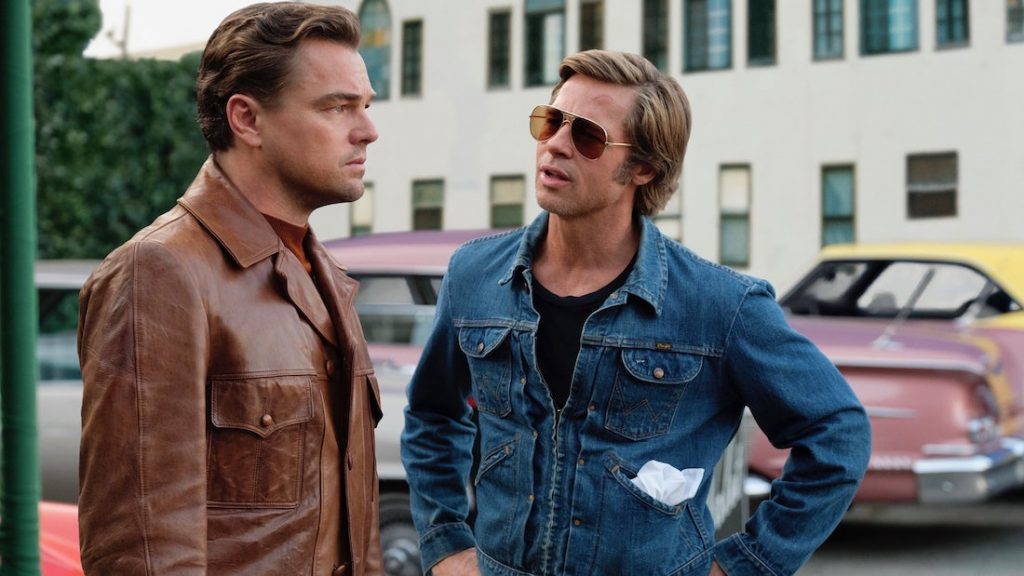
Once Upon a Time… in Hollywood. I knew Quentin Tarantino had a brain, eyes, and ears. Once Upon a Time… in Hollywood (2019) is a masterpiece on the theme of maturity, proving Tarantino also has a heart. Too much attention is given to the Charles Manson angle, however. Superficially the comic-book violence of the conclusion might have something in common with Tarantino’s earlier films… but the point of this one, surely, is that in the Tate-LaBianca murders he identifies a hideousness even from 1960s Hollywood and does something clever with it. The result is the ultimate nostalgia trip, where the good times never stopped. Career-topping performances from Brad Pitt and Leonardo DiCaprio help, as does the delightful attention to period detail.

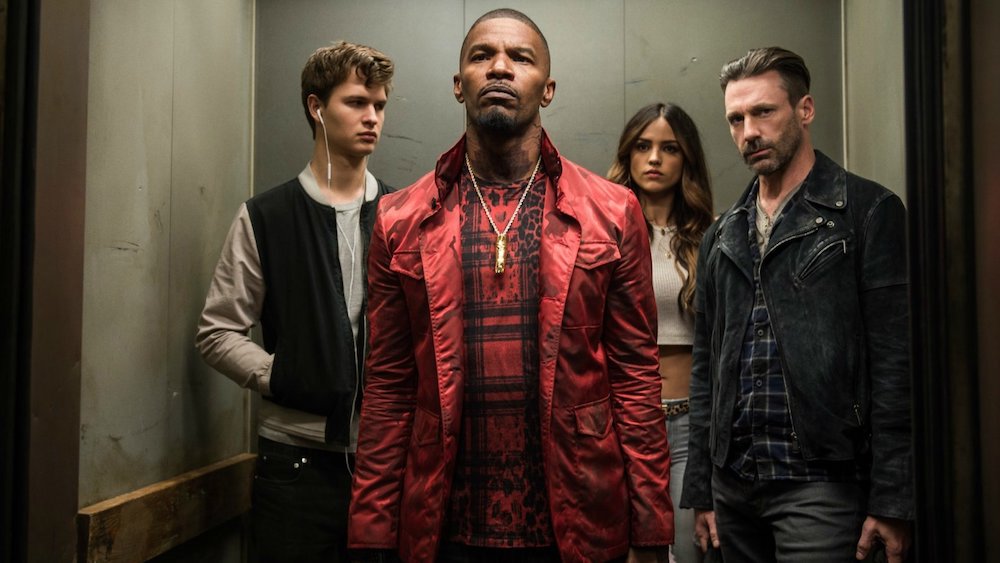
Baby Driver. Edgar Wright has always been a personal favourite. Baby Driver (2017) pulsates with cinematic flair and energy, becoming a stylistic amalgam of Heat and Drive with a touch of La La Land. A lot of what makes Baby Driver special is how the editing, action, and cinematography seem meticulously synced to its pulsating soundtrack. The driving set-pieces and stunts are perfect, unfolding more like a ballet performance rather than a typical car chase. Although narratively it’s nothing we haven’t seen before, and one could argue it’s style over substance…. but, wow, what style!
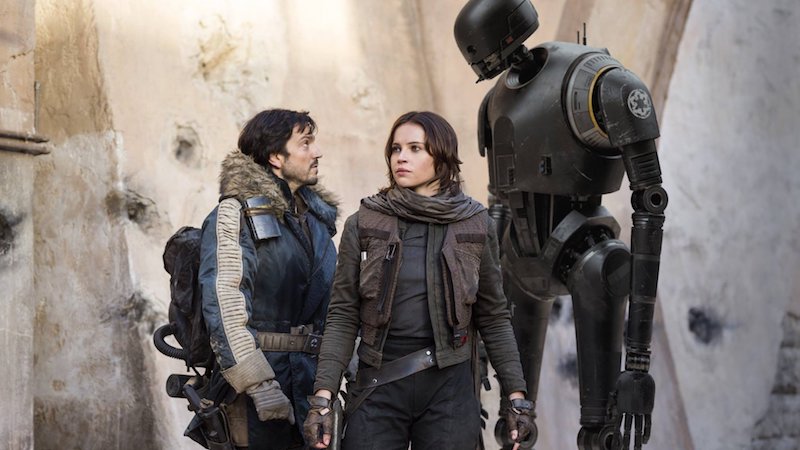
Rogue One: A Star Wars Story. What I love about Rogue One (2016) is how the characters aren’t the noble Jedi and rascally smugglers we’re used to seeing. They’re the grunts too often pushed into the background. Gareth Edwards (Godzilla) succeeds at creating memorable new Star Wars characters and settings, telling compelling story despite knowing how things turn out. The climax trumps anything from Disney’s parallel sequel trilogy, bringing a dark and uncertain tone to its conflict. It’s an all-out war movie, and the sacrifices hammer home the significance of the battles being fought. Rogue One is a thrilling experience that feels authentic to Star Wars lore, while simultaneously working as a rousing standalone feature.
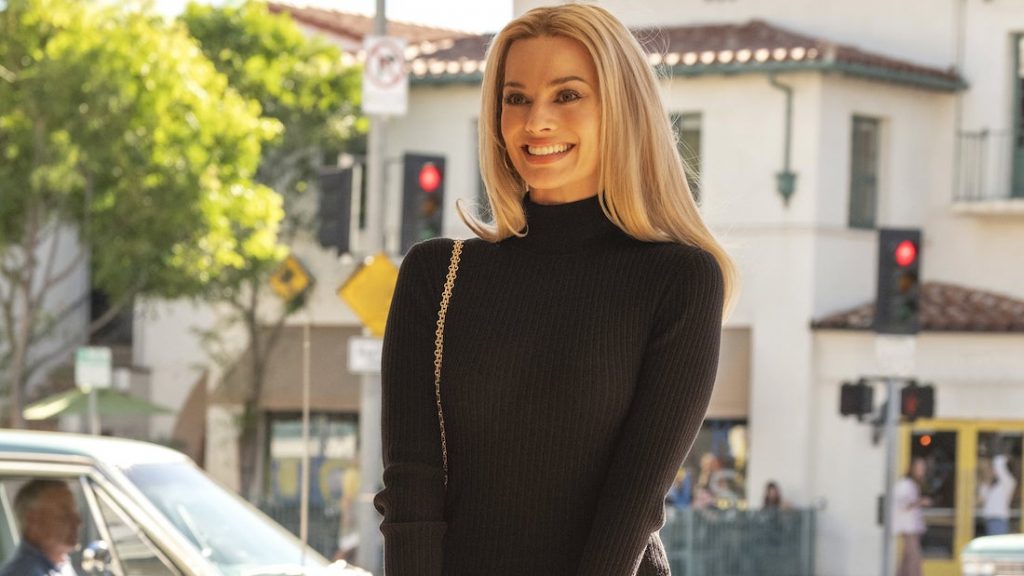
Once Upon a Time… in Hollywood. This is Quentin Tarantino at his most vibrant, detailed, and stylish. He does a brilliant job recreating 1960s pop culture iconography; the wide shots of city streets are stunningly detailed, as vintage cars drive down the strip drenched in fluorescent neon lights. He captures the period’s sights and sounds so vividly. Once Upon a Time… in Hollywood was billed as Tarantino’s tale about the harrowing Manson-family murders, but the tragic history is used as a mere springboard for something more interesting.
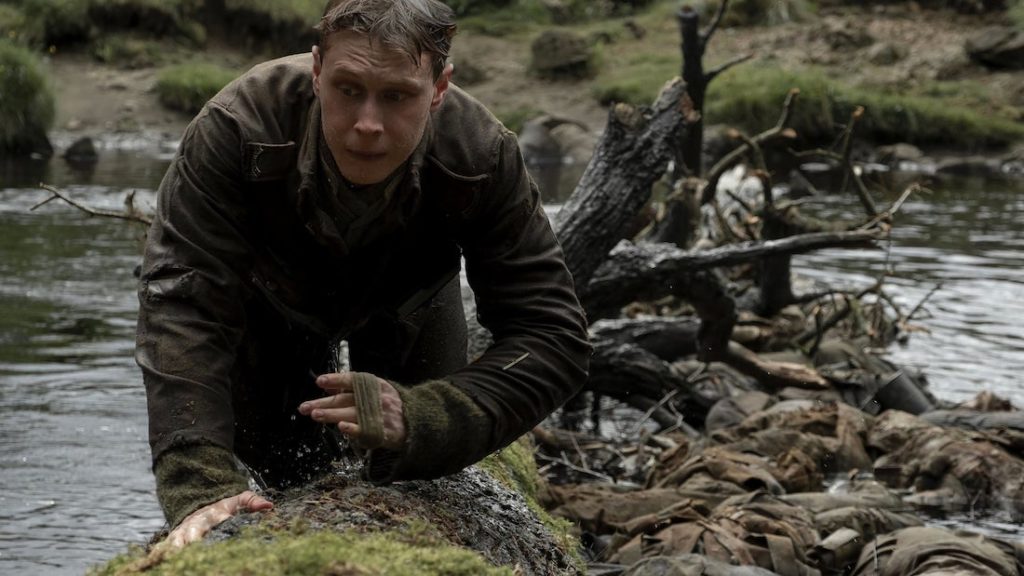
1917. Sam Mendes’ World War I epic 1917 (2019) gripped me from the moment the mission was given to the characters. Wonderful cinematography and clever editing combined to make it appear like one single continuous shot from start to finish. 1917 is more of an experience than a war movie. Mendes uses the tools of the medium to prove that the art of cinema still exists.
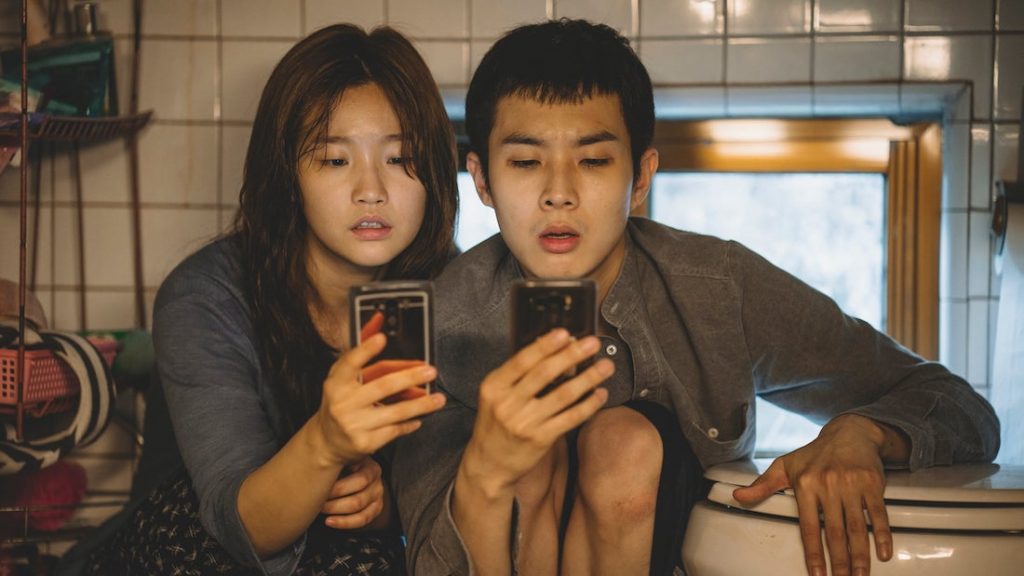
Parasite. Bong Joon-ho’s surprise ‘Best Picture’ Academy Award winner is an unsettling black comedy about class struggle. Parasite (2019) poses many questions about the hierarchal structures created by the wealth gap, especially the inhuman treatment and inequality of the lower classes. Parasite is also blessed with superb cinematography from Hong Kyung-po (Okja), as the simplest of camera angles and use of lighting create an almost dreamlike quality to the Park house—designed by Ha-jun Lee (The Housemaid). Fantastically orchestrated, beautifully filmed, and a finely crafted picture that’s genuinely gripping. Beginning as a dark comedy, segueing into tragedy… Parasite is truly a story of two halves.

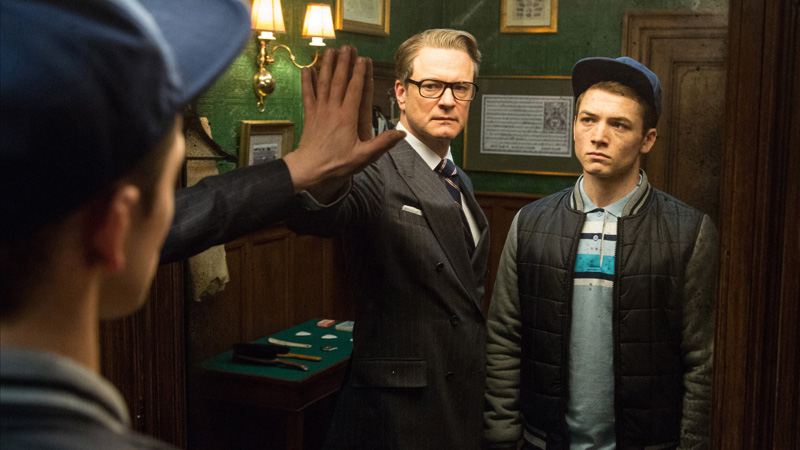
Kingsman: The Secret Service. It was so anarchic, and yet underneath its apparent bad taste it’s a story about a young man learning to be polite, dress smartly, and be respectful, a kind of modern gentlemanliness defined as separate from the old class system. Maybe Kingsman’s (2014*) ultimately benevolent nature is why two eighty-something ladies in the same screening as me (presumably attracted by the presence of Colin Firth) laughed constantly throughout, even at the misjudged anal sex gag.
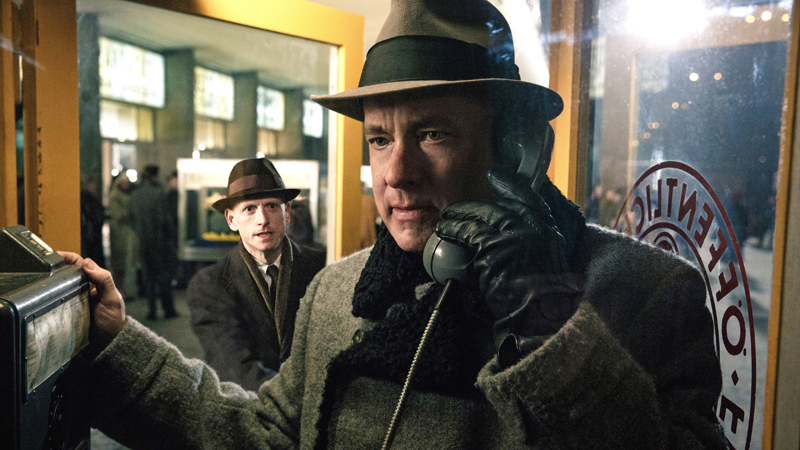
Bridge of Spies is a film I would’ve described as “perfectly fine” when it was first released, and yet I keep finding myself drawn to watch it again, and again, and again. I think Bridge of Spies (2015) is easily Spielberg’s best of the decade, and with the combination of a fascinating true story, a Coens-glossed script, and Tom Hanks and Mark Rylance both at the top of their game, I think it’s underrated.
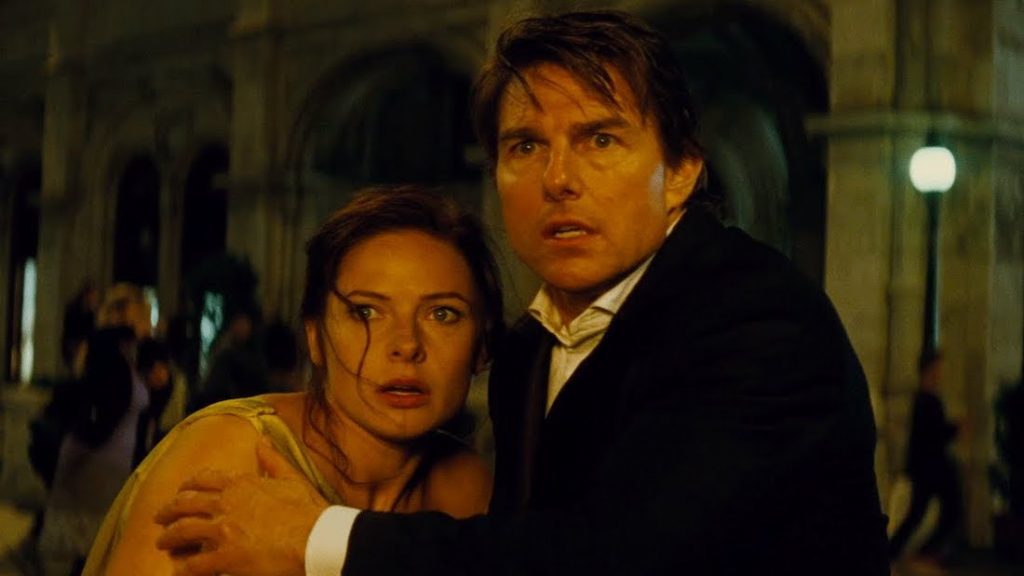
Mission: Impossible — Rogue Nation. Sure, it’s not a stone-cold action masterpiece in the sense Fallout might be, but it’s as though Christopher McQuarrie took all the bits I liked about the other Mission films and compiled them in the perfect package. I truly love Rogue Nation (2015), as it gives me the same thrill as North by Northwest (1959).
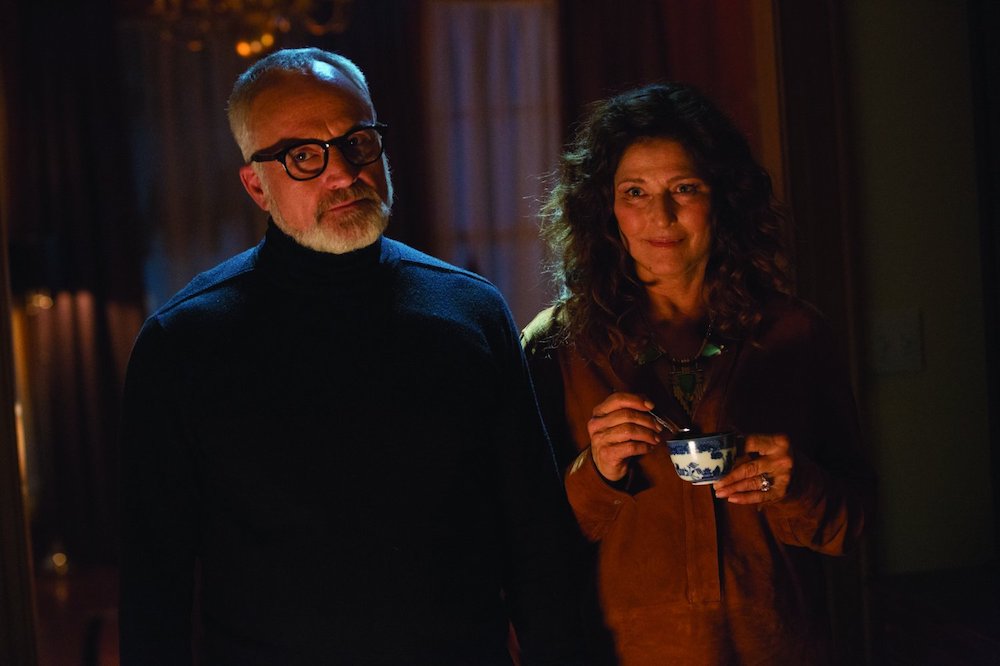
Get Out. I thought this was bloody brilliant. It’s deceptively difficult to execute this kind of comedy and horror without muddling the tones. The film is amusing, but never not-scary, and it’s just so wonderfully paced and executed, with no false steps. And yet, behind the entertainment, it’s an intelligent commentary on racial politics in America. Jordan Peele achieved that by embedding it in the plot so every twist and turn makes a comment without having to compromise or pause the drama.

Rocketman. I went to see this three times in the cinema, which is once more than the others on this list. I expected to enjoy it, but I didn’t expect to love it. In the way that only great jukebox musicals can (hello, Mamma Mia!), it unlocked the music of Elton John for me. Taron Egerton doesn’t get enough credit as an actor, but he’s terrific in this.

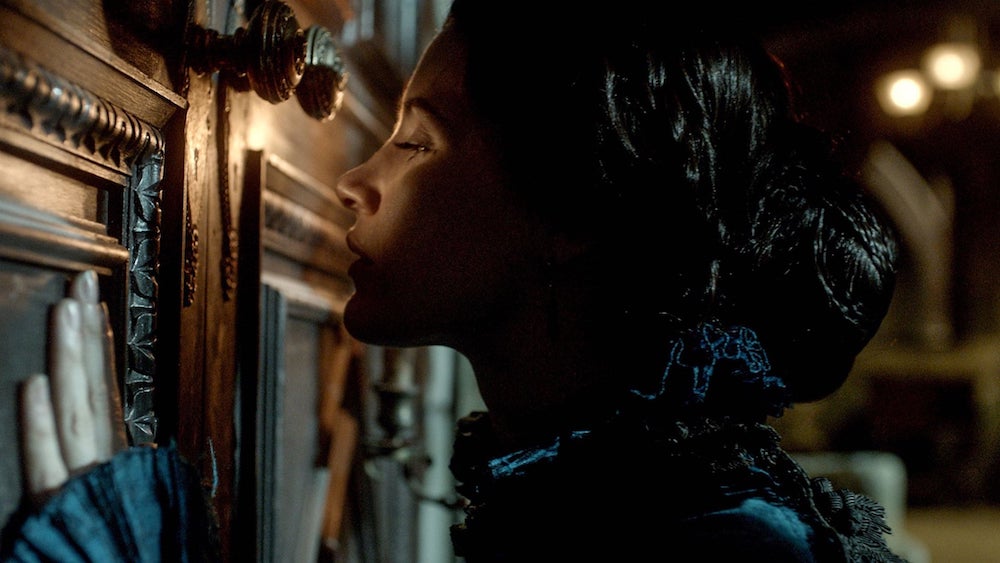
Crimson Peak. Guillermo del Toro’s superlative retake on the classic Gothic romance, beautiful period costumes and gorgeous sets, Tom Hiddleston in a top hat and really spooky ghosts… need I say more? Crimson Peak (2015) moves with sure lyricism through every twist and turns, so dense with detail it deserves a re-watch every Halloween.
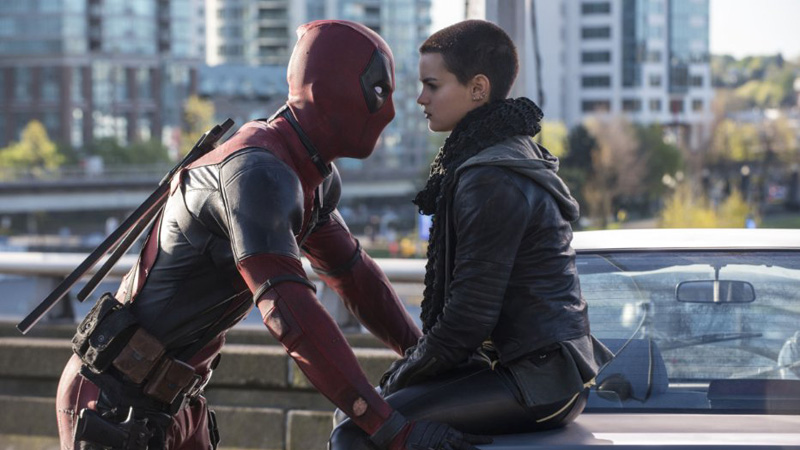
Deadpool. From the opening with its classic 1970’s tunes and Deadpool drawing in crayons on a bridge, I was hooked and laughing at this quirky comic superhero offering. I liked Deadpool’s (2016) risque montage of the central romance and the emotional issues around a tragedy. It was so refreshing compared to the other blockbuster superhero films around.
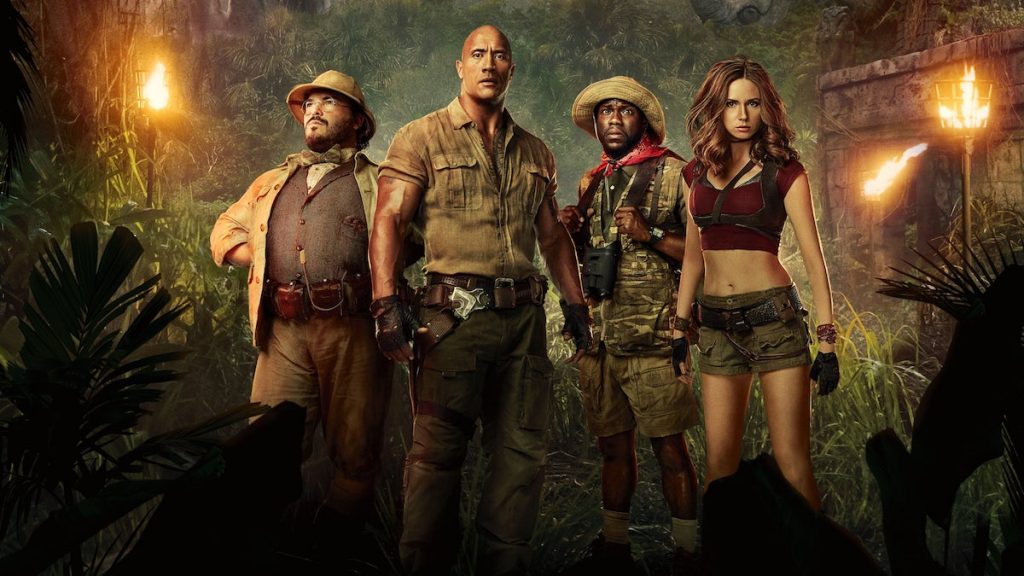
Jumanji: Welcome to the Jungle. Jack Black has too much fun playing girly cheerleader Bethany trapped inside a ‘male nerd’ avatar! Jumanji stars Dwayne Johnson, Karen Gillan, and Kevin Hart also have a hoot acting against type in this fast-paced action-comedy reboot of the 1995 original.
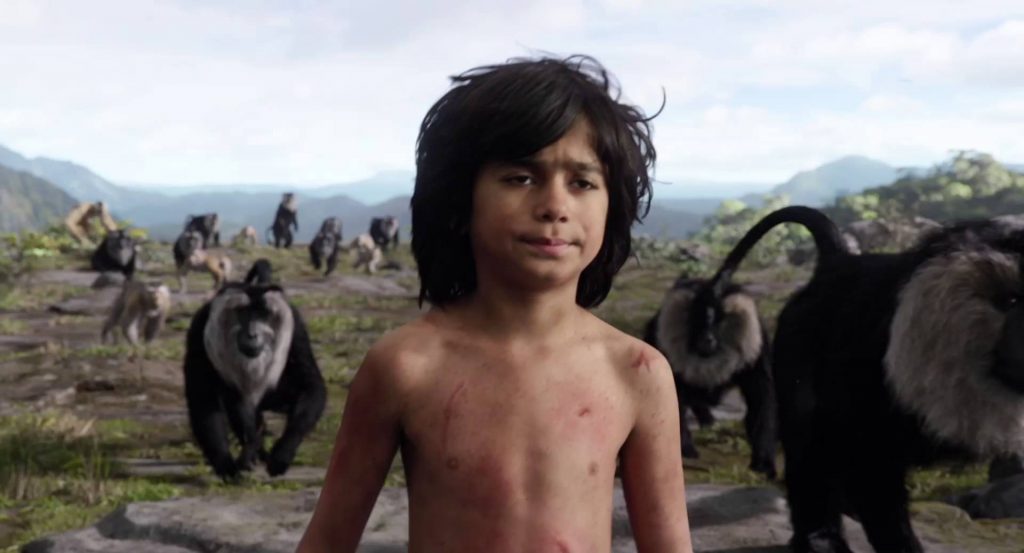
The Jungle Book. A vivid and exotic remake of the classic 1960’s Disney animation based on Rudyard Kipling’s Just So stories is another family treat. The photorealistic VFX is awesome, and young Neel Sethi is marvellous as Mowgli. The vocal performances were also brilliant: from Ben Kingsley as Bagheera and Bill Murray as Baloo, to Idris Elba as Sheer Khan and Christopher Walken as King Louie! The Jungle Book’s (2016) epic scale takes on current themes of the fragile balance of man and nature. Disney doing its thing particularly well for a new generation.
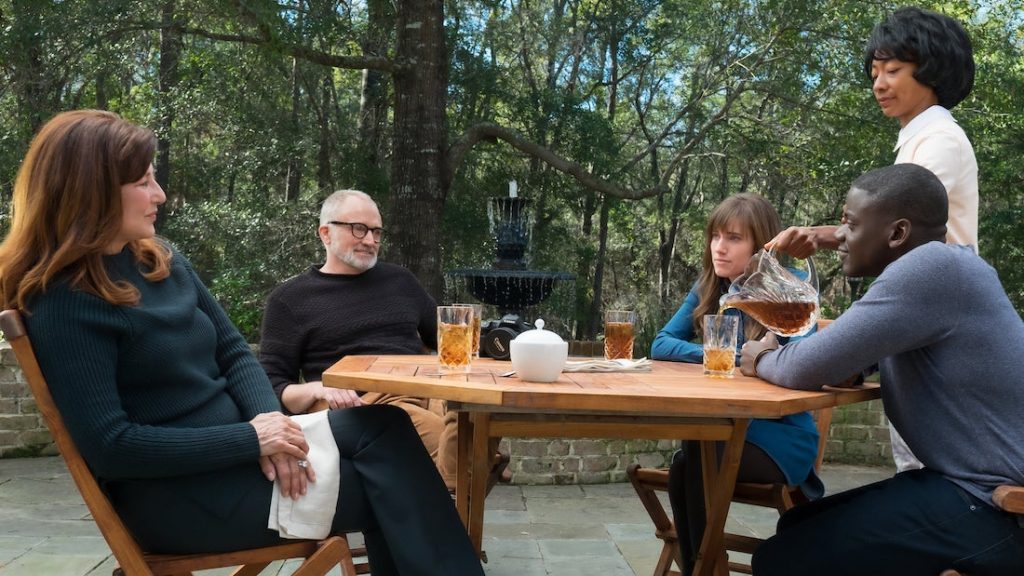
Get Out. Jordan Peele thoroughly deserved his ‘Best Original Screenplay’ Oscar! Get Out was edgy, scary, funny, and there’s even a bit of schlock thrown in at the end. The acting was great, the pacing admirable, and it deftly handled some powerful themes. I was relieved about the ending, too… for once the test audiences were right!

* While these films officially premiered in 2014, they were on national release most places in 2015.
